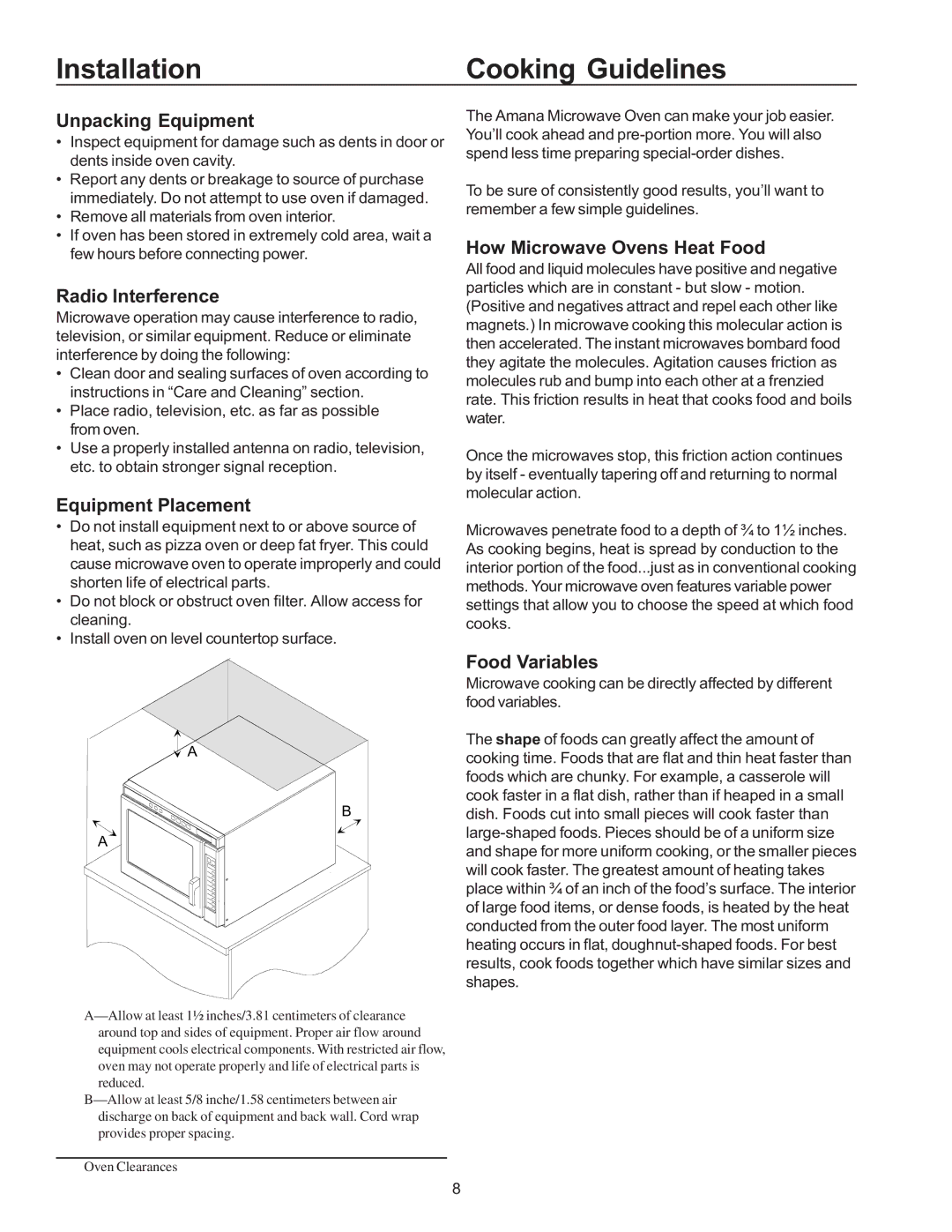
Installation | Cooking Guidelines |
Unpacking Equipment
•Inspect equipment for damage such as dents in door or dents inside oven cavity.
•Report any dents or breakage to source of purchase immediately. Do not attempt to use oven if damaged.
•Remove all materials from oven interior.
•If oven has been stored in extremely cold area, wait a few hours before connecting power.
Radio Interference
Microwave operation may cause interference to radio, television, or similar equipment. Reduce or eliminate interference by doing the following:
•Clean door and sealing surfaces of oven according to instructions in “Care and Cleaning” section.
•Place radio, television, etc. as far as possible from oven.
•Use a properly installed antenna on radio, television, etc. to obtain stronger signal reception.
Equipment Placement
•Do not install equipment next to or above source of heat, such as pizza oven or deep fat fryer. This could cause microwave oven to operate improperly and could shorten life of electrical parts.
•Do not block or obstruct oven filter. Allow access for cleaning.
•Install oven on level countertop surface.
![]() A
A
B
A
Oven Clearances
The Amana Microwave Oven can make your job easier. You’ll cook ahead and
To be sure of consistently good results, you’ll want to remember a few simple guidelines.
How Microwave Ovens Heat Food
All food and liquid molecules have positive and negative particles which are in constant - but slow - motion. (Positive and negatives attract and repel each other like magnets.) In microwave cooking this molecular action is then accelerated. The instant microwaves bombard food they agitate the molecules. Agitation causes friction as molecules rub and bump into each other at a frenzied rate. This friction results in heat that cooks food and boils water.
Once the microwaves stop, this friction action continues by itself - eventually tapering off and returning to normal molecular action.
Microwaves penetrate food to a depth of ¾ to 1½ inches. As cooking begins, heat is spread by conduction to the interior portion of the food...just as in conventional cooking methods. Your microwave oven features variable power settings that allow you to choose the speed at which food cooks.
Food Variables
Microwave cooking can be directly affected by different food variables.
The shape of foods can greatly affect the amount of cooking time. Foods that are flat and thin heat faster than foods which are chunky. For example, a casserole will cook faster in a flat dish, rather than if heaped in a small dish. Foods cut into small pieces will cook faster than
8
